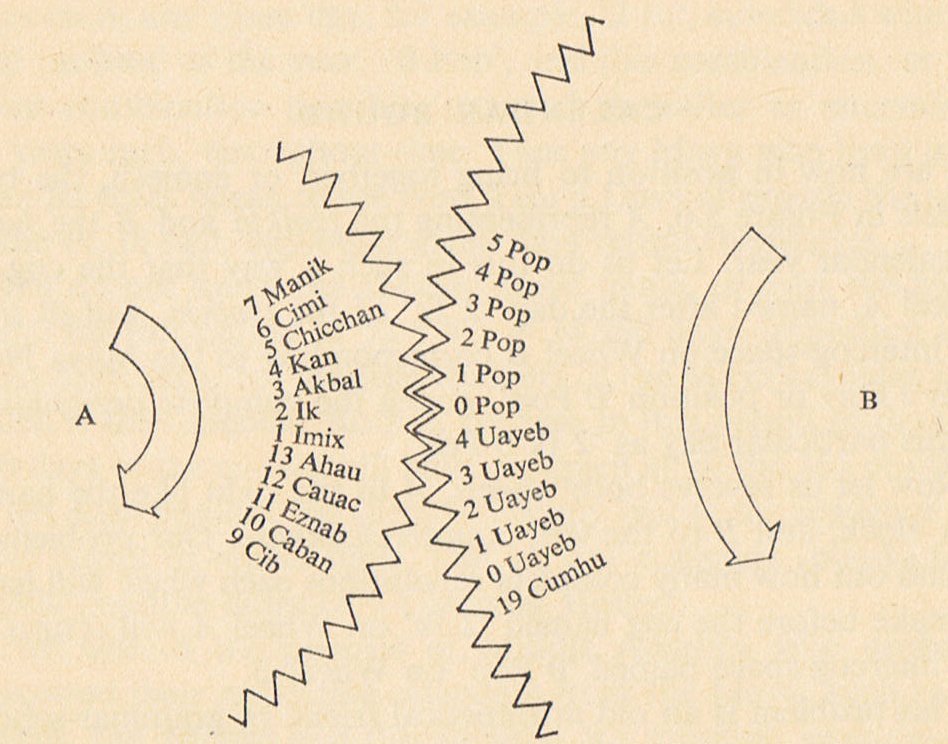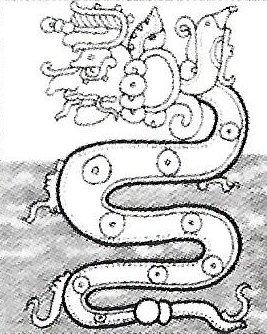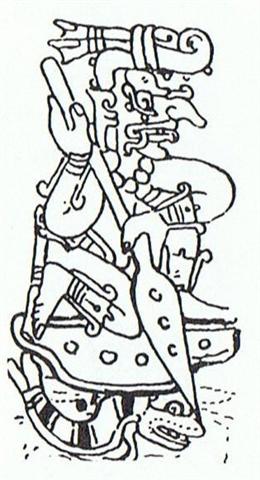40. In the G text there are 10 glyphs (right ascension days) from the Heart (of the plumb line) at Antares ... In the inscriptions of Dendera, published by Dümichen, the goddess Hathor is called 'lady of every joy'. For once, Dümichen adds: Literally ... 'the lady of every heart circuit'. This is not to say that the Egyptians had discovered the circulation of the blood. But the determinative sign for 'heart' often figures as the plumb bob at the end of a plumb line coming from a well-known astronomical or surveying device, the merkhet. Evidently, 'heart' is something very specific, as it were the 'center of gravity' ... See Aeg.Wb. 2, pp. 55f. for sign of the heart (ib) as expressing generally 'the middle, the center' ...
to the Root at η in the Scorpion, but also to the slightly Preceding One (η Ophiuchi) in December 5:
And from December 5 (339) to Christmas Eve (December 24) there should be *278 - *259 = *19 right ascension days and glyphs:
But 5 days before Christmas Eve (*278) was the very important Nash (γ Sagittarii) - down in the great reincarnating river named Milky Way: ... Men's spirits were thought to dwell in the Milky Way between incarnations. This conception has been handed down as an Orphic and Pythagorean tradition fitting into the frame of the migration of the soul. Macrobius, who has provided the broadest report on the matter, has it that souls ascend by way of Capricorn, and then, in order to be reborn, descend again through the 'Gate of Cancer'. Macrobius talks of signs; the constellations rising at the solstices in his time (and still in ours) were Gemini and Sagittarius: the 'Gate of Cancer' means Gemini ...
... Gronw Pebyr, who figures as the lord of Penllyn - 'Lord of the Lake' - which was also the title of Tegid Voel, Cerridwen's husband, is really Llew's twin and tanist ... Gronw reigns during the second half of the year, after Llew's sacrificial murder; and the weary stag whom he kills and flays outside Llew's castle stands for Llew himself (a 'stag of seven fights'). This constant shift in symbolic values makes the allegory difficult for the prose-minded reader to follow, but to the poet who remembers the fate of the pastoral Hercules the sense is clear: after despatching Llew with the dart hurled at him from Bryn Kyvergyr, Gronw flays him, cuts him to pieces and distributes the pieces among his merry-men. The clue is given in the phrase 'baiting his dogs'. Math had similarly made a stag of his rival Gilvaethwy, earlier in the story. It seems likely that Llew's mediaeval successor, Red Robin Hood, was also once worshipped as a stag. His presence at the Abbot's Bromley Horn Dance would be difficult to account for otherwise, and stag's horn moss is sometimes called Robin Hood's Hatband. In May, the stag puts on his red summer coat. Llew visits the Castle of Arianrhod in a coracle of weed and sedge. The coracle is the same old harvest basket in which nearly every antique Sun-god makes his New Year voyage; and the virgin princess, his mother, is always waiting to greet him on the bank. As has already been mentioned, the Delphians worshipped Dionysus once a year as the new-born child, Liknites, 'the Child in the Harvest Basket', which was a shovel-shaped basket of rush and osier used as a harvest basket, a cradle, a manger, and a winnowing-fan for tossing the grain up into the air against the wind, to separate it from the chaff. The worship of the Divine Child was established in Minoan Crete, its most famous early home in Europe. In 1903, on the site of the temple of Dictaean Zeues - the Zeus who was yearly born in Rhea's cave at Dicte near Cnossos, where Pythagoras spent 'thrice nine hallowed days' of his initiation - was found a Greek hymn which seems to preserve the original Minoan formula in which the gypsum-powdered, sword-dancing Curetes, or tutors, saluted the Child at his birthday feast. In it he is hailed as 'the Cronian one' who comes yearly to Dicte mounted on a sow and escorted by a spirit-throng, and begged for peace and plenty as a reward for their joyful leaps. The tradition preserved by Hyginus in his Poetic Astronomy that the constellation Capricorn ('He-goat') was Zeus's foster-brother Aegipan, the Kid of the Goat Amalthea whose horn Zeus also placed among the stars, shows that Zeus was born at mid-winter when the Sun entered the house of Capricorn. The date is confirmed by the alternative version of the myth, that he was suckled by a sow - evidently the one on whose back he yearly rode into Dicte - since in Egypt swine's flesh and milk were permitted food only at the mid-winter festival. That the Sun-gods Dionysus, Apollo and Mithras were all also reputedly born at the Winter solstice is well known, and the Christian Church first fixed the Nativity feast of Jesus Christ at the same season, in the year A.D. 273. St. Chrysostom, a century later, said that the intention was that 'while the heathen were busied with their profane rites the Christians might perform their holy ones without disturbance', but justified the date as suitable for one who was 'the Sun of Righteousness'. Another confirmation of the date is that Zeus was the son of Cronos, whom we have securely identified with Fearn, or Bran, the god of the F month in the Beth-Luis-Nion. If one reckons back 280 days from the Winter Solstice, that is to say ten months of the Beth-Luis-Nion calendar, the normal period of human gestation, one comes to the first day of Fearn. (Similarly, reckoning 280 days forward from the Winter Solstice, one comes to the first day of the G month, Gore, sacred to Dionysus; Dionysus the vine and ivy-god, as opposed to the Sun-god, was son to Zeus.) Cuchulain was born as the result of his mother's swallowing a may-fly; but in Ireland may-flies often appear in late March, so his birthday was probably the same ...
The 1st position in the list of 13 Mayan day signs, preceding Light (Ik) and Night (Akbal), was that of Imix (Water, Wine, Sea-dragon):
... The life-force of the earth is water. God moulded the earth with water. Blood too he made out of water. Even in a stone there is this force, for there is moisture in everything. But if Nummo is water, it also produces copper. When the sky is overcast, the sun's rays may be seen materializing on the misty horizon. These rays, excreted by the spirits, are of copper and are light. They are water too, because they uphold the earth's moisture as it rises. The Pair excrete light, because they are also light ... 'The sun's rays,' he went on, 'are fire and the Nummo's excrement. It is the rays which give the sun its strength. It is the Nummo who gives life to this star, for the sun is in some sort a star.' It was difficult to get him to explain what he meant by this obscure statement. The Nazarene made more than one fruitless effort to understand this part of the cosmogony; he could not discover any chink or crack through which to apprehend its meaning. He was moreover confronted with identifications which no European, that is, no average rational European, could admit. He felt himself humiliated, though not disagreeably so, at finding that his informant regarded fire and water as complementary, and not as opposites. The rays of light and heat draw the water up, and also cause it to descend again in the form of rain. That is all to the good. The movement created by this coming and going is a good thing. By means of the rays the Nummo draws out, and gives back the life-force. This movement indeed makes life ...
|
||||||||||||||||||||||||||||||||||||||||||||||||||||||||||||||||||||||||||||||||||||||||||||||||||||||||||||||||||||||||||||||||||||||||||||||||||||||||||||||||||||||||||||||||||||||||||||||||||||||||||||||||||||||||||||||||||||||||||||||||||||||||||||||||||||||||||||||||||||||||||||||||||||||||||||||||||||||



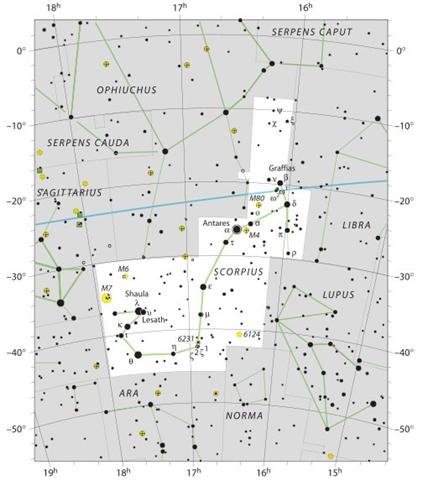









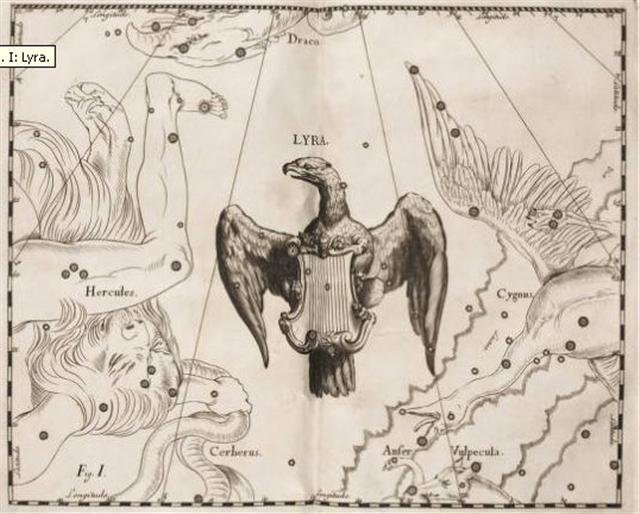







.jpg)


